Letters from Lodi
An insightful and objective look at viticulture and winemaking from the Lodi
Appellation and the growers and vintners behind these crafts. Told from the
perspective of multi-award winning wine journalist, Randy Caparoso.
Lodi's Marian's Vineyard is named 2025 Vineyard of the Year by California State Fair
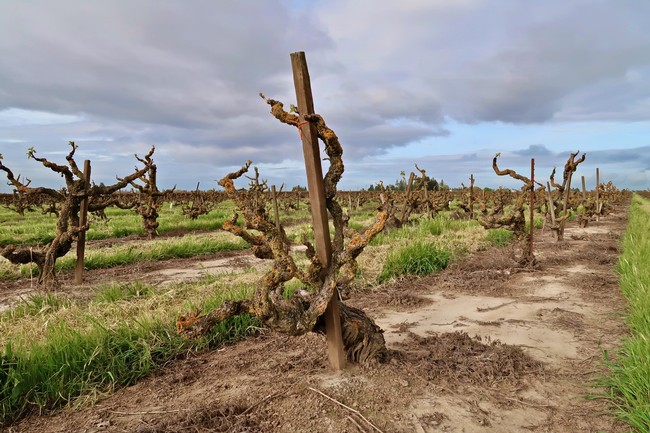
Lodi's Marian's Vineyard—the 2025 California Vineyard of the Year—in late March 2025, during first bud break.
Last week Mark Chandler, Chief Judge at the California State Fair Wine Competition, announced that Marian’s Vineyard, located in Lodi’s Mokelumne River appellation, was named the 2025 “Vineyard of the Year” by the State Fair Wine Industry Task Force.
Each year one vineyard out of the entire state of California is accorded this lofty honor. Marian’s Vineyard is the second Lodi Vineyard to be named “Vineyard of the Year.” In 2014 Bechthold Vineyard—a historic vineyard originally planted in 1886 (Lodi’s oldest continuously farmed planting consisting of 25 acres of own-rooted Cinsaut)—was recognized in this fashion.

Sign certifying Marian's Vineyard as a Historic Vineyard.
According to Mr. Chandler:
The State Fair Wine Industry Task Force is made up of a team of nine wine industry notables in the fields of winemaking, wine writing and wine marketing...
Marian's Vineyard was nominated by longtime Sacramento-based wine writer Mike Dunne, who states, "Marian's Vineyard, in Lodi, stands for quality, individuality, and perseverance in old vine Zinfandel. Vintage after vintage, it delivers exceptional wine, but also should be recognized for its endurance, and as a warning about what could be lost if old vine Zinfandel continues to be removed.”
On April 16, this award will be presented to Lodi’s Fry family of Mohr-Fry Ranches, who have owned and farmed Marian’s Vineyard since 1965, at the California State Fair Wine Judges Dinner, to be held at the Old Sugar Mill in Clarksburg.
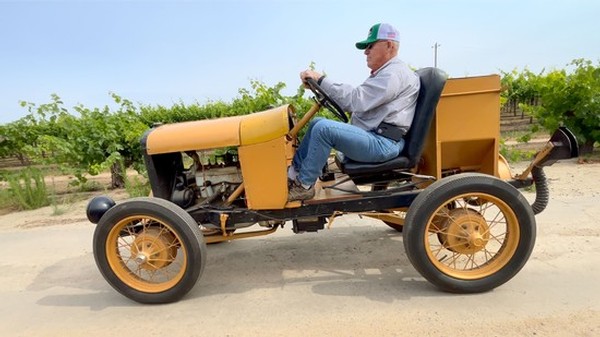
Mohr-Fry Ranches President Jerry Fry showing off his family's vintage sulfur duster. Lodi Winegrape Commission.
A legacy of two historic Lodi families
Marian’s Vineyard is an 8.3 acre stand of head trained Zinfandel, originally planted on its own natural rootstocks by a branch of the Mettler family in 1901. It is part of the Frys’ 225-acre farm located just south of the urban area of the City of Lodi, west of West Lane between W. Harney Lane and Armstrong Road.
When acquired by the Mohr-Fry family in 1965, the property was called West Lane Ranch, and consisted of multiple blocks of Zinfandel, Flame Tokay, Palomino (a grape utilized for Sherry wine production), Alicante Bouschet, almond and cherry trees.
According to Mohr-Fry Ranches President Jerry Fry:
I was totally shocked to hear about the award. I would have been amazed just to know it was nominated for this great honor. Marian’s Vineyard has been the heart of Mohr-Fry Ranches since our family purchased the property from J. J. Mettler in 1965. From what I understand, it was the first vineyard block planted by the family shortly after they moved to Lodi, at the turn of the century.
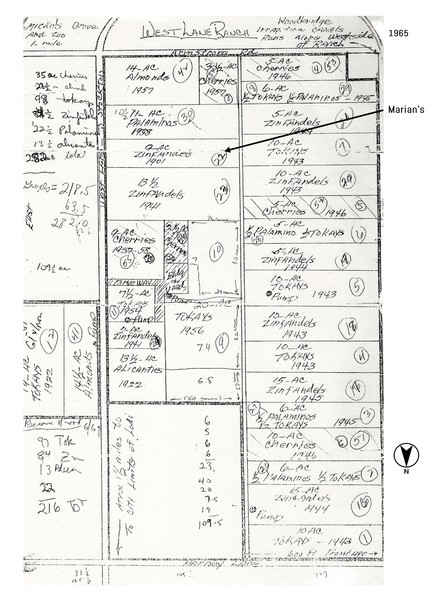
Hand-drawn map of West Lane Ranch given to the Fry family by the Mettlers in 1965, identifying each block and when it was planted. Mohr-Fry Ranches.
Adds Bruce Fry, Jerry Fry’s son and current CEO of the family farming business, “What an honor to be named with all the others who have previously won this award. It is especially important for us this year [2025] because we are celebrating 170 years of our family farming in California.”
The history of the Mohrs and Frys goes all the way back to 1852 when Bruce Fry's great-great-grandfather on Jerry's mother's side, Cornelius Mohr, left his job on a Danish whaling ship in the port of San Francisco. In 1855 Cornelius established a 200-acre farmstead in Mount Eden, near what later became Hayward, CA, attracting a small community of other Danish-German immigrants to form a "Little Copenhagen." Bruce is as excited as ever about the future because, as he tells it, “My daughter, Mohrgan has just joined our family operation, as part of the 6th generation. It is so special, to have 3 generations working together everyday... now that’s what you call sustainability!"
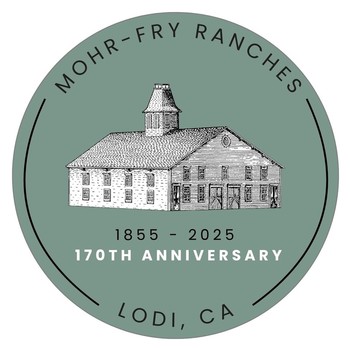
The “Marian” for whom the vineyard is named is Jerry Fry’s mother, Marian Mohr-Fry. Remarks Jerry, “I wish my mother and father [Jeryl Fry Sr.], as well as Jacob Mettler and his sons, were alive to enjoy this recognition. While there is now a worldwide effort to preserve old vineyards by organizations such as the The Old Vine Conference and Historic Vineyard Society, it has always been an economic challenge to keep old vineyards in the ground. We will, however, continue to do our best to stay the course.”
Bruce pays tribute to Marian Mohr-Fry by saying, “My grandmother Marian was a very beautiful and elegant woman just like this vineyard, and the wines that are produced out of the grapes. She was always looking at the positives of life and kept going and never gave up. An award like this honors both the vineyard and our family's long history of farming.”

Marian Mohr-Fry (1913-2007) in 1986, age 73, at Mohr-Fry Ranches. Mohr-Fry Ranches.
How Marian’s Vineyard came to distinguish itself
There are, of course, thousands of acres of vineyards in Lodi alone that qualify as “old vine”—defined, according to California’s Historic Vineyard Society, as vineyards in which at least third of the plants are at least 50 years old. Despite the inevitable replacement of individual plants that have died over the course of Marian’s 124-year lifespan, over 90% of the vineyard is still made up of the original 1901 vines—a testament to the incredible health of the natural environment and meticulous farming of multiple generations.
Make no mistake, though, Marian’s Vineyard is being recognized on the basis of its long, consistent record of wines of monumental quality. Like many of Lodi’s heritage vineyards, this particular 8.3-acre block went largely unrecognized during most of its early existence (in the case of Marian's, for over 90 years).
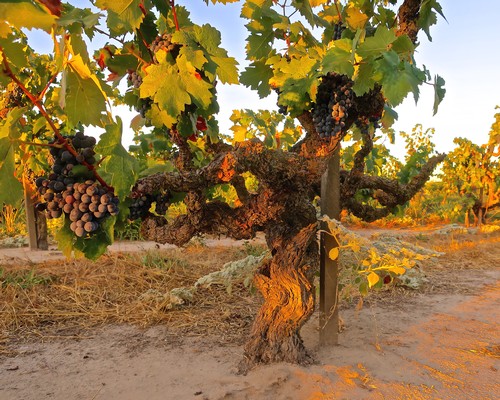
Marian's Vineyard in mid-July, just after veraison.
The turning point came in the mid-1990s when, as Bruce recalls, “Tim Spencer [the late, great founder of Lodi’s St. Amant Winery] came to my dad and asked if we had any old vine Zinfandel that we might want to highlight. The 1901 block was the natural choice. We loaned him 7 tons, since at the time Tim did not have the money to pay for the grapes upon delivery [the Spencer family was in the middle of replanting their own vineyard, which had fallen prey to the root louse known as phylloxera]. A short time later, in 2003, it was St. Amant’s 2001 Marian’s Vineyard that made one of the first major breakthroughs for Lodi by being selected ‘Best Zinfandel in California’ at the California State Fair.”
Today, Marian’s Vineyard Zinfandel is bottled by St. Amant Winery as a “Reserve” wine. To preserve as much of the natural sensory qualities of the vineyard as possible, according to St. Amant owner/winemaker Stuart Spencer, the wine is crafted by employing “the Lodi Native approach utilizing minimal intervention, beginning with native yeast, no new oak, and a natural approach designed to highlight the distinct attributes of this historic vineyard." If anything, the wines are better than ever!

Jerry Fry (left) shortly after joining the family farming business in the late 1960s, when the ranch grew and shipped Flame Tokay as the Young Fry co-op with Manual Young. Mohr-Fry Ranches.
Phenomenon of terroir
The Fry family has always been one of Lodi’s strongest and most vocal proponents of LODI RULEs for Sustainable Winegrowing since this groundbreaking organization’s original conception (beginning in 1992) and its official launch in 2005.
In the case of Marian’s Vineyard, it is a matter of impeccable farming going hand in hand with a vineyard terroir, or specific “sense of place.” In this sense, a Marian’s Vineyard Zinfandel is much more than a “Zinfandel.” The sensory qualities consistently expressed by this growth reflect an utterly unique set of natural circumstances, most of it attributable to Mother Nature herself.
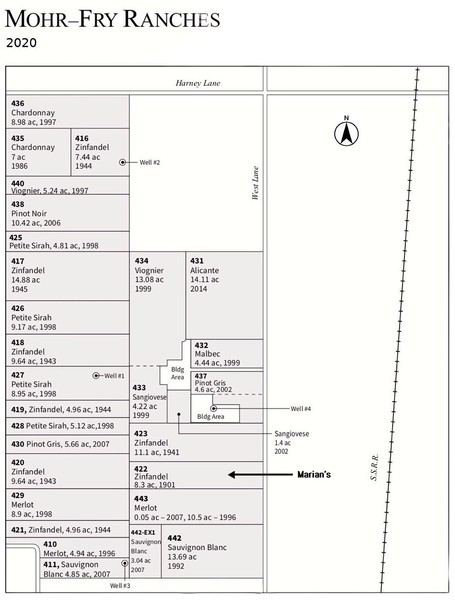
2020 map of Mohr-Fry Ranches showing today's diverse wine grape plantings; including Chardonnay, Sauvignon blanc, Pinot gris, Viognier, Pinot noir, Sangiovese, Petite Sirah, Malbec and Merlot, on top of the heritage Alicante Bouschet and original eight blocks of Zinfandel. Mohr-Fry Ranches.
There were, in fact, seven other separate blocks of Zinfandel planted by the Mettlers in the original West Lane Ranch, including an adjacent 11.1-acre stand of own-rooted vines planted in 1941 just north of Marian’s, and a 9.64-acre block of own-rooted Zinfandel planted in 1943 to the immediate west of Marian’s. Even though separated by just a few feet of narrow dirt road, none of the neighboring blocks, which are plenty old by “old vine” standards, produce a wine considered anywhere near as grand as Marian’s.

Bruce Fry, fifth generation California farmer and CEO of Mohr-Fry Ranches.
Among other Lodi Zinfandels, Marian's seems to have it all: Combining the soaring red berry fragrances, bright acidity and delineation associated with "east side" Lodi Zinfandels with the depth, breadth and scale associated with "west side" Lodi Zinfandels (the two sides of Lodi are traditionally demarcated by the historic railroad tracks running through the City of Lodi, located just a stone's throw away from Mohr-Fry Ranches).
All of the 1940s Zinfandel blocks in Mohr-Fry Ranches produce aromatic wines with excellent sense of roundness and layering, winning their share of top awards. But the profiles are different, perceptively earthier and slightly more black fruit toned than Marian’s. The fact that the “other-than-Marian’s” vineyards in Mohr-Fry Ranches, farmed with the exact same care and located just a few feet from each other, produce distinctly different wines is proof positive that the phenomenon of terroir exists.
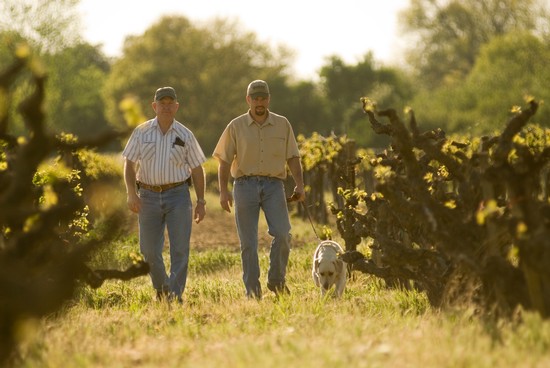
Jerry and Bruce Fry walking among the old vine Zinfandel. Mohr-Fry Ranches.
Out of the eight old vine blocks producing top quality Lodi Zinfandel in Mohr-Fry Ranches, there is only one that stands out enough to be considered one of the finest of California vineyards, planted to any grape in any of the state’s myriad wine regions. Location counts!
Is this magic, science, or a happenstance of history and hardscrabble farming? Probably a little of everything. Over the years both the Frys and Spencers have talked about the differences among the Zinfandel blocks, and why Marian’s stands out. While they are all planted in the same type of deep, white-ish, fine sandy loam soil, some of the speculation has been about the deep, largely unseen, subsoil layering (particularly streaks of lime lenses known to run through the ranch), accounting for some of the differentiations among the blocks.

Comparison of Zinfandel clusters demonstrating the subtle yet distinctively different cluster morphology among the blocks: Marian's Vineyard (left) vs. Mohr-Fry Block 416 (right).
There is also speculation that the seven blocks planted between 1941 and 1945—farmed, possibly, separately by different sons of J.J. Mettler—were cultivated from different plant material (i.e., Zinfandel plants with ever-so-slightly different genetic material) from what was originally used in the Marian’s block in 1901. Hence, the visible differences, observable to this day, in plant as well as cluster and berry morphology among the various blocks.
Bruce Fry has said, “Because the youngest Zinfandel blocks were planted 20 years before we took over the ranch from the Mettlers, we have no idea of where the plant material came from—that’s a mystery. What we can tell you is that Marian’s produces a longer, larger cluster, and always with bigger berries, whereas Block 416 [planted in 1944] produces consistently smaller, shorter clusters, with smaller berries. Is it because of the plant selection? Is it the soil differences in each site? That’s the mystique of it all, I guess.”
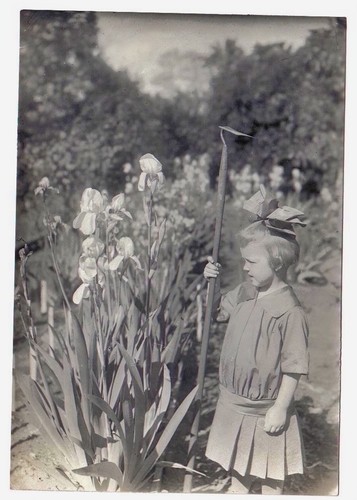
Marian Mohr-Fry (age 3) in 1916, Hayward, CA. Mohr-Fry Ranches.
St. Amant, in fact, has been producing Zinfandels from both Marian’s and Mohr-Fry’s Block 416 since 1996. Says Spencer, “To me, wines from Block 416 represent a classic Lodi style Zinfandel—bright red and dark fruits, a little more up-front than Marian’s, with underlying brambly, black tea leaf qualities.”
It is Marian’s, though, that Spencer has always nicknamed the “Mother of all Vines.” It has remained a phenomenon among all other Lodi Zinfandels, and can now also be known as a California “Vineyard of the Year,” considered a cut above (at least in 2025) all other vineyards in the state. A recognition—for Mohr-Fry Ranches and all of Lodi—clearly well deserved!

The +100-year-old barn in Mohr Fry Ranches behind a block of trellised Sangiovese and, in the foreground, own-rooted Zinfandel planted in 1941. Mohr-Fry Ranches.